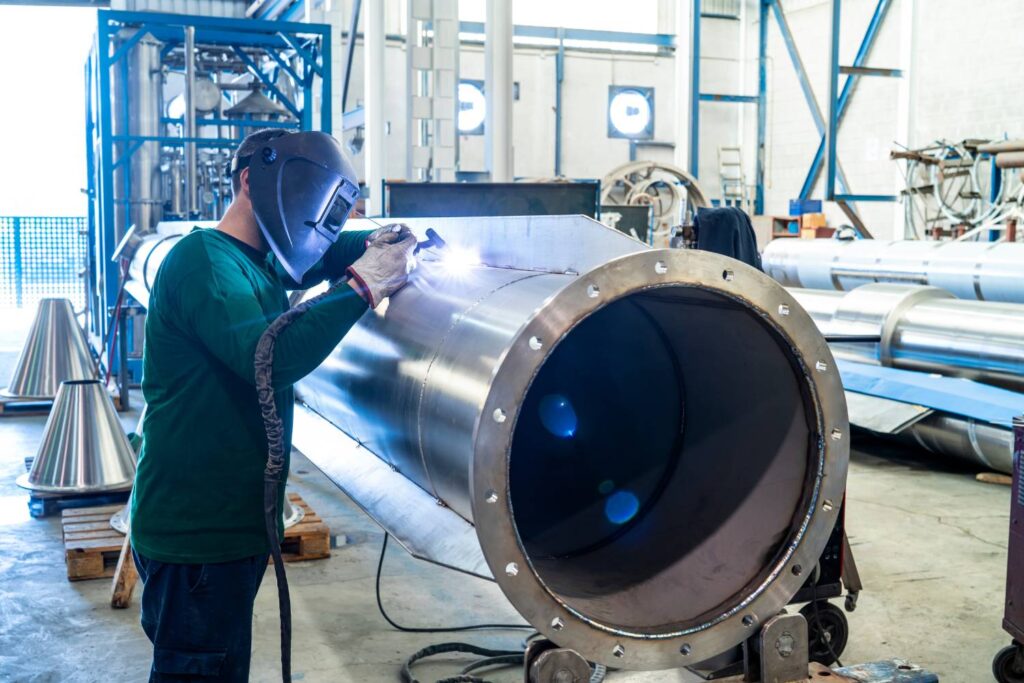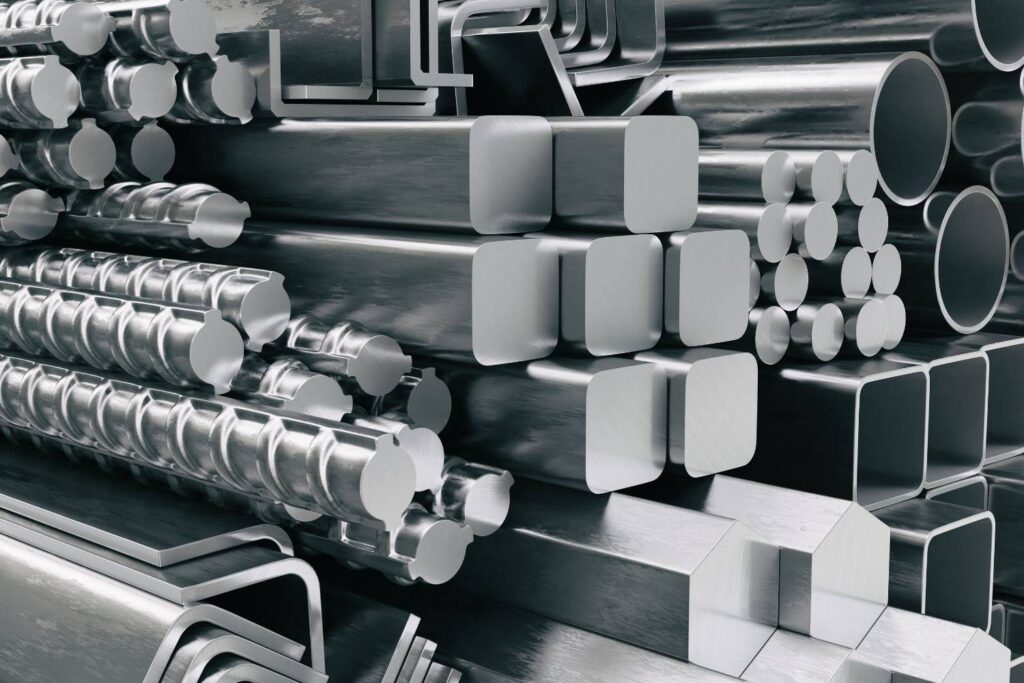Metal finishing is an essential process in manufacturing, significantly impacting the durability, appearance, and functionality of metal parts.
Various techniques have been developed over the years to cater to the diverse needs of industries such as automotive, aerospace, architecture, consumer electronics, and more.
In this blog, we will explore the most common types of metal finishes, highlighting their applications, benefits, and considerations.
Let’s get straight to the point
Metal finishing is a crucial manufacturing process that enhances the durability, appearance, and functionality of metal parts.
Common metal finishes include plating, anodising, powder coating, grinding, polishing, and advanced techniques like PVD/CVD coatings and laser engraving. These finishes are widely used in automotive, architecture, consumer electronics, and medical devices.
When choosing a metal finish, key considerations include material compatibility, environmental exposure, aesthetic preferences, cost, production efficiency, and maintenance requirements.

The Basics of Metal Finishing
Metal finishing refers to a broad range of processes that alter the surface of metal products to improve their properties.
These properties include durability, corrosion resistance, aesthetic appeal, and electrical conductivity. Finishing can also reduce surface roughness, improve friction characteristics, and provide a decorative appearance.
Plating and Conversion Coatings
Plating is a common metal finishing process where a thin layer of another metal, such as zinc, nickel, or chromium, is applied to a metal surface. This enhances durability, reduces surface friction, and increases corrosion resistance. Plating techniques include electroplating, which uses an electric current, and electroless plating, which relies on chemical reactions.
Conversion coatings involve chemically altering the metal surface to improve properties like corrosion resistance. A typical example is phosphate coating, which is often used as a base for paint or as a rust inhibitor.
Anodising
Anodising is an electrochemical process primarily used for aluminium. It increases the thickness of the natural oxide layer on the metal surface, improving corrosion resistance, surface hardness, and wear resistance. Anodizing also allows for the addition of coloured dyes, making it a popular choice for decorative finishes in consumer electronics and architectural applications.
Powder Coating
Powder coating is a dry finishing process in which a powder material is applied to the metal surface and then cured under heat. This creates a hard, durable finish that resists chipping, scratching, and fading. Due to its excellent protective qualities and wide range of available colours, powder coating is widely used in automotive parts, outdoor furniture, and appliances.
Grinding and Polishing
Metal grinding and polishing are mechanical processes that smooth and refine metal surfaces. Grinding removes excess material and imperfections, while polishing achieves a smooth, often mirror-like finish. These processes are crucial in industries where aesthetic appeal and precision are paramount, such as medical devices and consumer electronics.
Electropolishing
Electropolishing is often described as the reverse of electroplating. It involves removing metal ions from the surface to smooth and polish the metal to a high sheen. This process improves the cleanliness, corrosion resistance, and appearance of metal parts. It benefits stainless steel components in the medical, food processing and pharmaceutical industries.
What Are the Advanced Techniques in Metal Finishing?
As technology evolves, more advanced metal finishing techniques have emerged, offering specialised solutions for specific industrial applications.
Physical and Chemical Vapor Deposition (PVD/CVD) Coatings
Physical Vapor Deposition (PVD) and Chemical Vapor Deposition (CVD) are state-of-the-art finishing processes that apply a thin, highly adherent coating to metal surfaces. These coatings are known for their exceptional durability, wear resistance, and corrosion protection. PVD coatings are commonly used in automotive parts, medical devices, and luxury consumer goods, while CVD is widely used in the semiconductor industry and on cutting tools.
Black Oxide Coating
Black oxide is a conversion coating typically used on ferrous metals to provide mild corrosion resistance, reduce light reflection, and enhance appearance. This finish is commonly applied to tools, automotive parts, and firearms.
Hot Dip Galvanising
Hot dip galvanising involves immersing steel or iron parts in molten zinc to create a robust, corrosion-resistant coating. This process forms a metallurgical bond between the zinc and the underlying metal, offering long-term protection against rust and environmental damage. It is widely used in construction, automotive, and marine applications.
Laser Engraving and Marking
Laser engraving and marking are advanced techniques used to etch or mark metal surfaces with high precision. These permanent markings can withstand harsh environmental conditions, making them ideal for serial numbers, barcodes, and decorative patterns on medical instruments, automotive parts, and industrial equipment.
How Are the Most Common Metal Finishes Applied Across Different Industries?
Automotive and Electric Vehicles (EVs)
In the automotive sector, metal finishes are crucial for functional and decorative purposes. Polished chrome and stainless steel finishes are popular for their sleek appearance and corrosion resistance, making them ideal for vehicle trims and accents. Powder coating is also extensively used for its durability and ability to withstand harsh environmental conditions, which is increasingly important as the demand for electric vehicles (EVs) grows.
Architecture and Construction
In architecture, metal finishes must combine aesthetic appeal with durability. Anodised aluminium is commonly used in building facades, window frames, and curtain walls due to its excellent corrosion resistance and ability to hold coloured dyes. Bronze and brass finishes add elegance to architectural hardware, such as door handles and lighting fixtures, while powder coating is favoured for its weather-resistant properties.
Consumer Electronics
Anodised aluminium is a popular choice in consumer electronics. It offers a durable, scratch-resistant finish that enhances the aesthetic appeal of products like smartphones, laptops, and tablets. The sleek, modern look of brushed metal finishes is also highly sought after for high-end electronics.
Medical Devices
In the medical industry, metal finishes must meet strict hygiene and durability standards. Electropolishing is widely used for surgical instruments and implants because it creates a smooth, clean surface that resists bacterial contamination. Passivation is another common finish that enhances the corrosion resistance of stainless steel used in medical devices.

What Factors Should Be Considered When Choosing a Metal Finish?
Selecting the appropriate metal finish depends on various factors, including the material’s base properties, the product’s intended use, environmental exposure, and aesthetic preferences.
Material Compatibility
Not all metal finishes are suitable for all types of metals. For example, anodising is ideal for aluminium, while stainless steel may benefit more from electropolishing or passivation. Understanding the compatibility between the metal and the finishing process is crucial to achieving the desired outcome.
Environmental Exposure
The environment in which the metal product will be used plays a significant role in selecting a finish for outdoor applications or those exposed to harsh chemicals; finishes like hot dip galvanising or powder coating offer superior protection. In contrast, anodised finishes are preferred for products used in marine environments due to their enhanced resistance to saltwater corrosion.
Aesthetic Preferences
The visual appeal of the metal finish is often a key consideration, particularly for consumer goods and architectural elements. Finishes like brushing, polishing, and PVD coating provide various aesthetic options, from matte to high gloss and even coloured finishes. The choice of finish should align with the product’s branding and design elements.
Cost and Production Efficiency
Cost is always a consideration in manufacturing. Some finishes, like electroplating, offer economies of scale for large production runs, while others, such as PVD coating, may be more cost-effective for high-value, low-volume products. Evaluating the cost-effectiveness of each option in the context of production volume and budget constraints is essential.
Maintenance and Longevity
The finished product’s maintenance requirements and expected lifespan are also important factors. Powder coating, for instance, provides a durable, low-maintenance surface that can extend the product’s life. At the same time, finishes like electroplating require regular upkeep to maintain their appearance and protective qualities.
Conclusion
Metal finishing is critical in manufacturing and producing metal parts and components. Whether you are looking for corrosion resistance, enhanced durability, or a decorative finish, understanding the most common types of metal finishing is essential for making informed decisions.
From plating and anodising to powder coating and electropolishing, each technique offers unique benefits that cater to various industries and applications.
By carefully considering factors such as material compatibility, environmental exposure, aesthetic preferences, and cost, manufacturers can select the right metal finish to enhance their products’ appearance, durability, and functionality.
As technology advances, the metal finishing industry will likely see even more innovative techniques that push the boundaries of what is possible.

